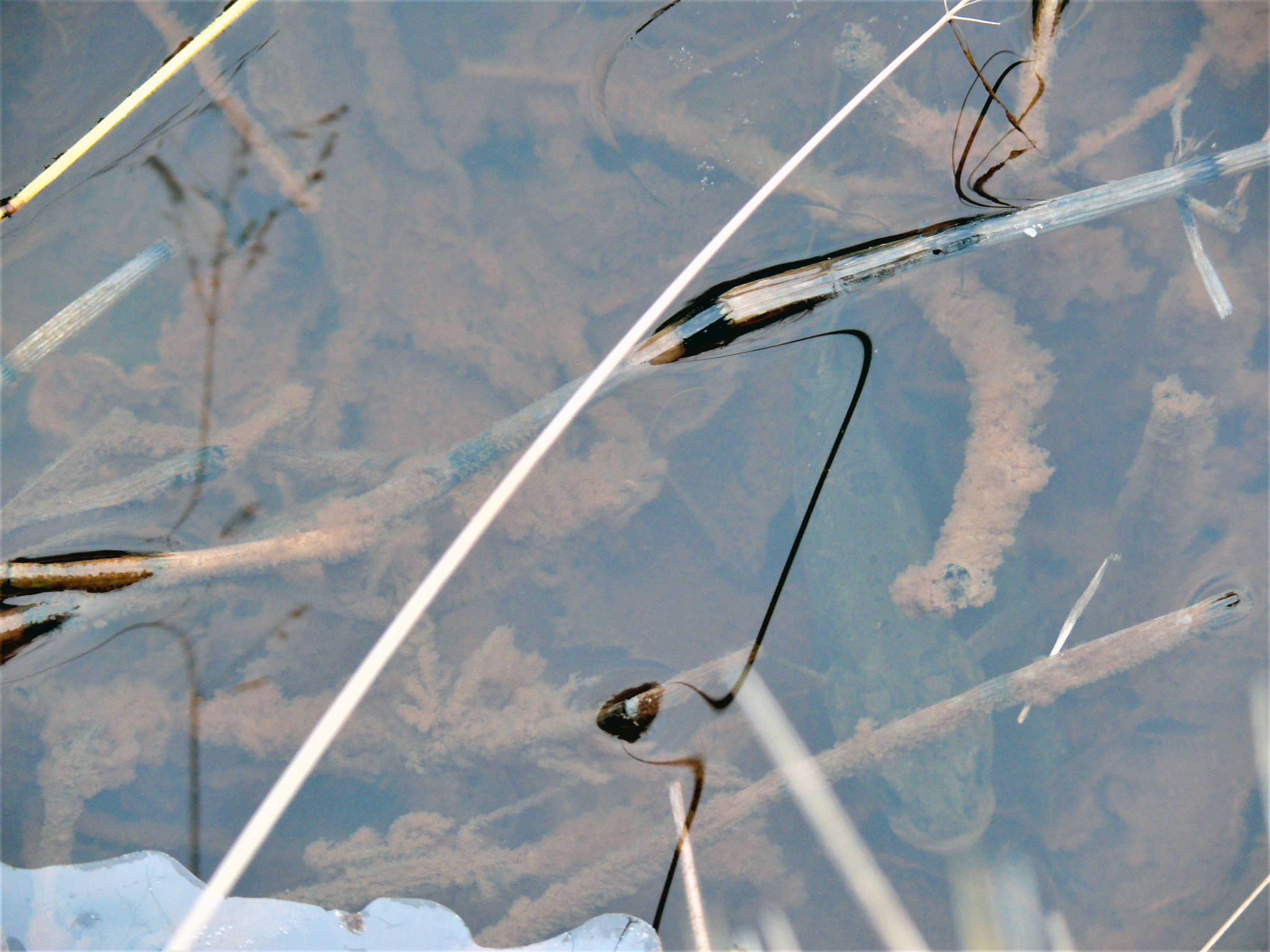By MATT BOWSER
Since learning that Alaska blackfish had been found in two small streams in the city of Kenai, I have wondered how they got here. Like northern pike, Alaska blackfish are native to Western and Interior Alaska, but they have been historically absent from Southcentral Alaska, including the Kenai Peninsula.
I wondered whether introduced blackfish in Southcentral Alaska get around like northern pike, which spread in our area through intentional introductions, or more like the invasive aquatic plant elodea, which has spread mostly accidentally through boat and floatplane traffic.
In the Refuge Notebook on Oct. 26, I wrote about the historical account of how blackfish were unintentionally transported from Western Alaska to Lake Hood in Anchorage on an amphibious aircraft. From there, the fish made their way through streams and wetlands, and were later spread by people to other water bodies in Anchorage and the Mat-Su.
Given the Anchorage story, it seemed possible that Alaska blackfish could have arrived in the city of Kenai by floatplane. The floatplane basin at the Kenai Municipal Airport has been there for some time and, judging from old topographic maps, was historically connected to two streams close to where blackfish now occur.
I looked for blackfish in water bodies currently and historically connected to the Kenai Municipal Airport floatplane basin, but I found none.
Jennifer Hester from the Kenai Watershed Forum set out a minnow trap, a good method for catching blackfish, in the floatplane basin. She caught only sticklebacks. Based on this recent work and historical fish sampling records, it looked like blackfish did not get to Kenai via the floatplane basin.
We still had one more tool at our disposal for learning more about where these fish came from. Matthew Campbell and Dr. J. Andrés López, both at the University of Alaska Fairbanks at the time, had investigated the geography and genetic diversity of Alaska blackfish, reporting their findings in the Journal of Fish Biology in 2014.
They had obtained DNA barcode sequences from 169 blackfish taken from 22 populations over much of the species’ range and published their data, providing a reference library of blackfish DNA barcodes from known locations. Campbell and López found that their one specimen from the Mat-Su was most similar to fish from Western Alaska, consistent with the historical account of how blackfish first arrived in Southcentral Alaska.
Thanks to Jennifer Hester, who collected blackfish for me in October from a pond in Kenai, I was able to send in two tissue samples for DNA barcoding. When I compared the sequences we obtained to the available library, I found that those from the Kenai population closely matched populations from the vicinity of Bethel. The Kenai sequences were also quite distinct from the Mat-Su population.
It now appears, based on genetics and where blackfish occur in the city of Kenai, that the progenitors of the Kenai population were brought from the Bethel vicinity by aircraft to the road system and released here.
Why would someone make this effort to transplant blackfish to Kenai? This hardy species is harvested for food in Northern and Western Alaska, so the intent may have been to stock a pond with harvestable fish.
Along similar lines, someone might have been trying to bring pike or something else from Bethel using minnow traps, with the blackfish coming along as bycatch. It seems unlikely that blackfish would have been brought all the way from Bethel for a fish tank and later released.
Whatever the original reasoning by whoever brought them here, the decision to have blackfish in the Kenai River system has been made for all of us and is practically irreversible. Northern pike have been eradicated from many water bodies in Southcentral Alaska using the piscicide rotenone, but treating lakes in Anchorage with this chemical led to increases in blackfish after other fish species were killed.
The only reason we have not seen blackfish spread in the Kenai River system as quickly as they did in Anchorage is that these two small streams in which blackfish now occur both drain into brackish water near the mouth of the Kenai. This is poor blackfish habitat and appears to have been a real barrier to their further spread to date.
It should be obvious, however, that the small distance separating blackfish in Kenai from productive salmon streams like the Moose and Swanson rivers is much less of an obstacle to dispersal than the Alaska Range that lies between Southcentral and Western Alaska, a barrier that blackfish have crossed twice now.
Matt Bowser serves as Entomologist at Kenai National Wildlife Refuge. Find more Refuge Notebook articles (1999–present) at https://www.fws.gov/refuge/Kenai/community/refuge_notebook.html.

